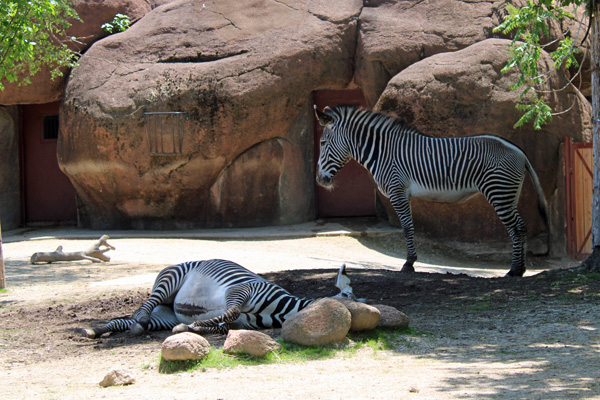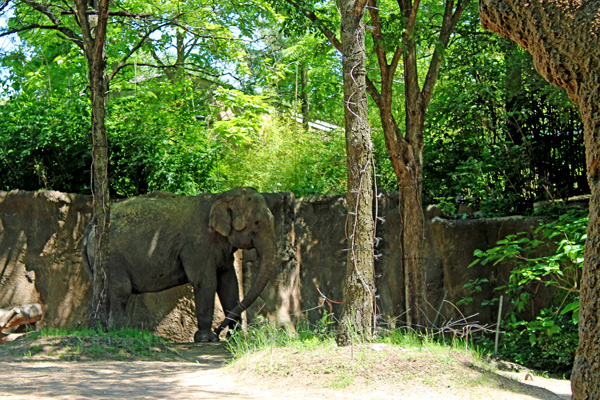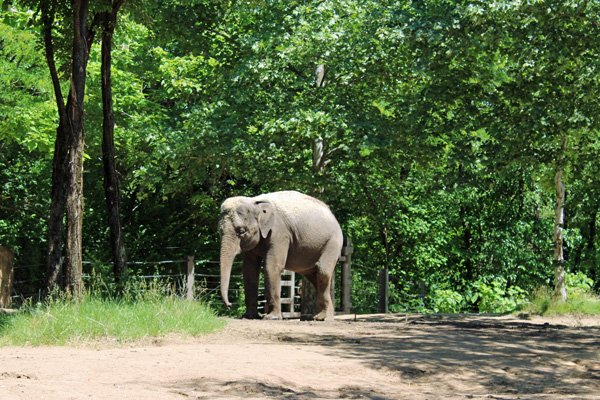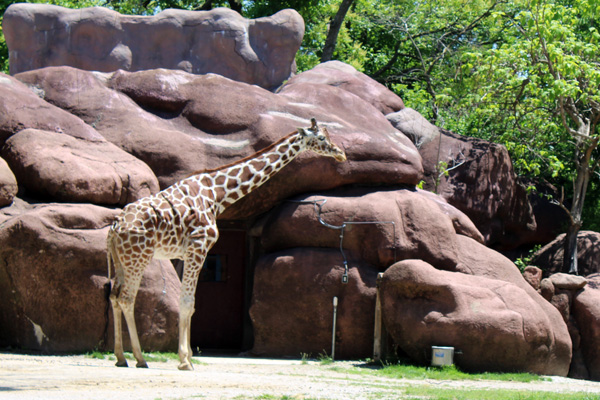The
two RV Gypsies enjoyed
Orangutan, Gorillas, Elephants, Giraffes, Gazelles,
and more animals at The St. Louis Zoo
in St. Louis, Missouri
May 2022 |
Orangutans are
great apes native to the rainforests of Indonesia and Malaysia. They
are now found only in parts of Borneo and Sumatra, but during the Pleistocene
they ranged throughout Southeast Asia and South China.The orangutans
are the only surviving species of the subfamily Ponginae, which diverged
genetically from the other hominids (gorillas, chimpanzees, and humans)
between 19.3 and 15.7 million years ago. |
 |
 |
Orangutans have long, sparse
orange or reddish hair unequally distributed over their bodies. They
have large jaws and flattened noses in concave faces. Orangutans are
the largest arboreal mammals and are very well adapted to life in the
trees, with arms much longer than their legs. They have grasping hands
and feet with long curved fingers and toes. They have distinctive fingerprints
and no visible external tails.
You can typically tell male and female orangutans apart by looking
at them. Males and females have flabby throat sacs, which become very
large in adult males. Adult males have deep chests and much longer body
hair than females do. Males also typically develop large cheek pads,
which demonstrate genetic fitness and amplify their long calls.
Orangutans can swing hand over hand, but they normally move cautiously
through large trees by climbing and walking. This allows them to distribute
their weight among the branches. Orangutans' hands make them graceful
and swift while swinging, but it makes walking on the ground very slow
and awkward.
Orangutans sometimes travel on the ground when going long distances
because appropriate sized branches may not always be available. When
on the ground, they use all four limbs, supporting themselves on the
sides of clenched fists, or occasionally walk on upright on two legs.
Orangutans also come down if there is a need to find food and water
elsewhere, for example, if there is a drought or fire |
 |
 |
| |
Gorillas are ground-dwelling
great apes that inhabit the tropical forests of equatorial Africa. The
DNA of gorillas is highly similar to that of humans, from 95 to 99%
depending on what is included, and they are the next closest living
relatives to humans. Gorillas' low reproductive rates means that even
low levels of hunting can cause a population decline, which could take
many generations to be reversed. |
 |
Below: Gorilla |
Monkeys |
 |
 |
| |
 |
 |
| |
Elephants are the largest
of all land animals in the world. It takes a female 22 months to have
a baby. This is longer than any other animal in the world. A newborn
elephant can stand up shortly after being born and can weigh up to 260
pounds.The average life span for an elephant in the wild is from 50
to 70 years. They oldest known elephant in the world lived to be 82
years of age. It is only a myth that elephants are afraid of mice. Elephants
eat a lot of different types of plants, mostly eating leaves, bark,
fruits of trees and shrubs. Elephants have an excellent sense of smell
and hearing but poor eyesight. When elephants greet each other, they
twine their trunks together. |
 |
 |
 |
 |
 |
 |
 |
 |
 |
 |
 |
| |
Giraffe's food source is leaves,
fruits, and flowers of woody plants, which they browse at heights most
other herbivores cannot reach. Lions, leopards, spotted hyenas, and
African wild dogs may prey upon giraffes. |
 |
 |
 |
 |
 |
| |
 |
|
|
| |
The word Gerenuk means 'giraffe-necked'
in Somali. Their appearance is so similar to a gazelle that the only
differences between them is that the skull of a gerenuk is more solid
than a gazelle and an elongated neck as compared to a gazelle. The Gerenuk
is an antelope with a giraffe-like neck. |
 |
 |
 |
 |
 |
 |
 |
| |
 |
 |






























































